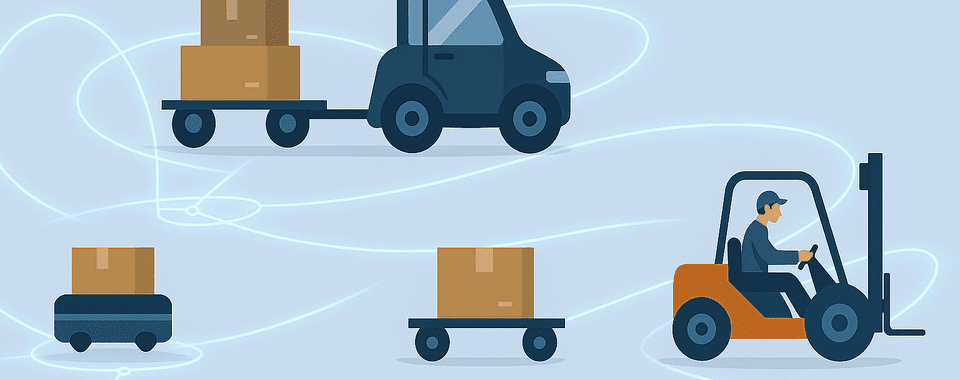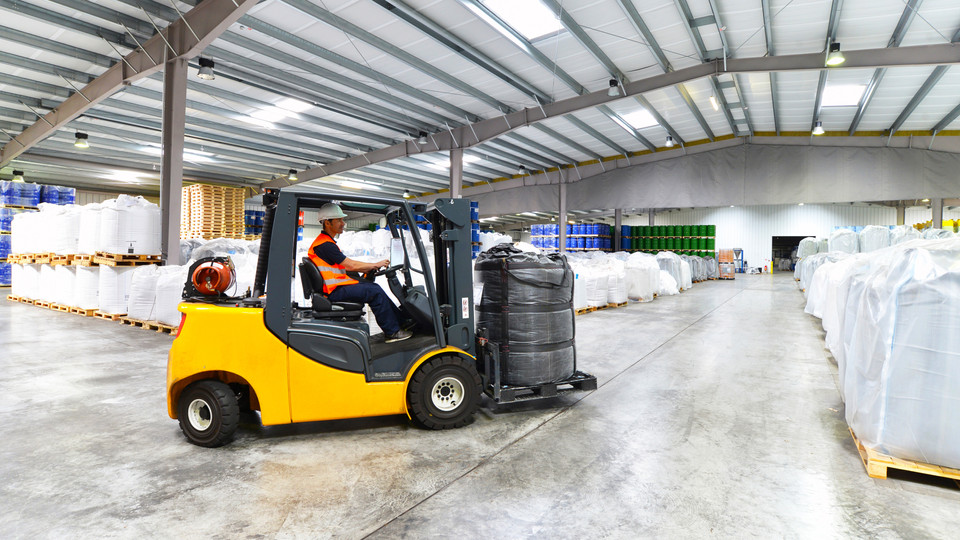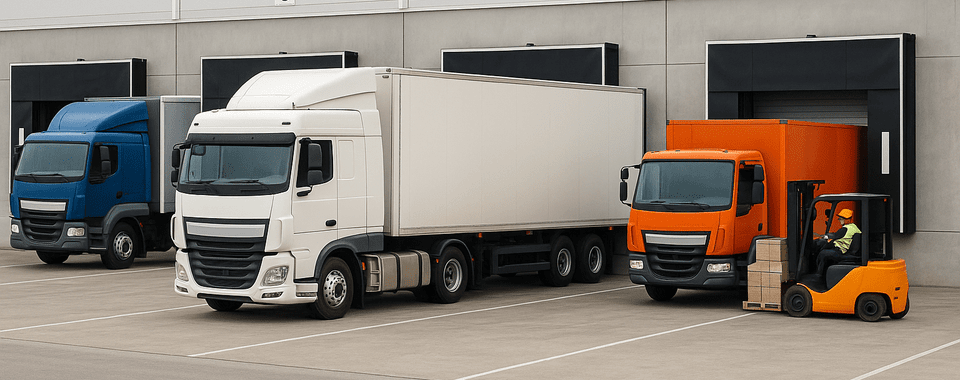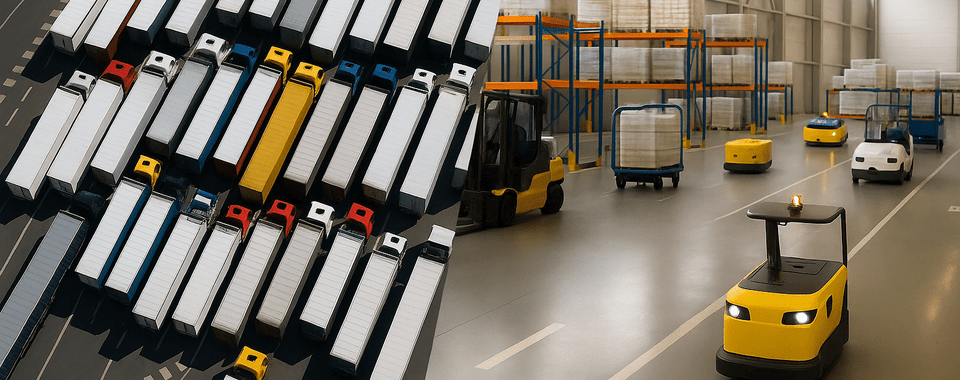Have you ever wondered how forklifts navigate so skillfully in large warehouses and production halls without getting lost in the chaos of everyday life? And who invented the forklift truck?
In 1917, the American Eugene Bradley Clark invented the "Tructractor," the first industrial forklift truck with an internal combustion engine, specially designed for the internal transportation of heavy materials at his company, Clark Equipment Company. The aim was to move material from A to B without muscle power, i.e., faster and more efficiently. It was not until after the Second World War that the forklift truck made its global breakthrough.
Today, forklift trucks have become an integral part of internal logistics and are on the move by the dozen in warehouses and production halls. There, they navigate alongside various manned and unmanned vehicles and between automated sorting systems and IoT-controlled (Internet of Things) machines that communicate in real time. Intralogistics today uses a wide range of technologies to master the challenges of modern supply chains. Modern warehouses and production halls have grown into dynamic ecosystems where people, machines, and advanced technologies work together seamlessly. And right in the middle of it all, since the very beginning, is the hidden hero of logistics - the forklift control system.
What is a forklift control system?
A forklift control system is a specialized logistics control software used within warehouses and production halls to optimize the movements of forklift fleets. This software controls forklift truck scheduling, routing, and order allocation. A forklift control system is designed to reduce operating costs, increase safety, and improve the efficiency of the logistics process.
Nowadays, however, forklift control systems are reaching their limits, especially when it comes to integrating and controlling a diverse fleet of transportation equipment consisting of forklifts, tugger trains, trailers, automated guided vehicles (AGVs), etc. As the name suggests, forklift control systems primarily specialize in forklift movements. They lack the functions required to respond adequately to spontaneous transportation needs. As a result, these systems are often unable to keep pace with the scaling of large or rapidly growing companies, where adaptation to larger, heterogeneous vehicle fleets and complex logistics requirements is necessary.
Beyond the limits of conventional forklift control systems
Intralogistics has developed rapidly over the last decade, driven by advances in automation technology and the increasing use of artificial intelligence. These technologies enable largely autonomous control of logistics processes and place new demands on the flexibility and scalability of control systems.
In modern intralogistics, transport orders with a wide variety of requirements come up against a wide range of transport resources. Traditional forklift control systems are often unable to manage these complex requirements effectively. They do not offer holistic solutions to optimize dynamic and varied transport needs, from urgent to routine deliveries.
On the other hand, modern intralogistics management systems integrate intelligent algorithms that plan and optimize the use of resources. They consider various factors such as technical constraints, distances, loading capacities, deadlines, and priorities. These systems make it possible to calculate the optimum transport sequence and select the optimum means of transport, even taking spontaneous requirements into account, to minimize overall distances and maximize adherence to delivery dates.
By pooling all available resources in a centrally controlled intralogistics management system, it is possible to react flexibly and quickly to changing requirements. This reduces idle times and operating costs and increases the overall efficiency of logistics processes. The ability to optimize in real time makes it possible to constantly make the best decisions based on the current situation, which leads to a significant reduction in overall travel times and better utilization of transport capacities.
These enhancements show that the future of intralogistics lies in the integration and intelligent control of all available resources and goes far beyond the limits of traditional forklift control systems.
Modern intralogistics - connected and flexible
Flexibility is crucial in today's fast-moving logistics world. Traditional, monolithic software solutions often reach their limits when dealing with the complex and dynamic requirements of the modern logistics landscape. Much more modular systems are required to implement customized solutions quickly and efficiently. These systems offer factory logistics the necessary adaptability with precisely the required functionality - no more and no less.
In many companies, individual areas or processes have already been digitized. These fragmented approaches often prove to be insufficient for the comprehensive needs of fully integrated logistics. The future requires end-to-end digitalization that is not limited to the automation of individual processes but promotes the end-to-end networking of all systems involved and pursues the overarching goal of overall optimization.
Modern intralogistics management systems are central to the coordination of digitized processes in companies and are key components for controlling logistics processes. These systems seamlessly connect different company areas and ensure consistent and efficient control of all logistics processes. They use real-time data from the entire logistics chain to enable precise analysis and integration. These advanced control systems not only optimize the allocation of transport orders but also quickly adapt to operational changes, reduce unnecessary empty runs, and maximize the use of transport resources. The result is a significant reduction in operating costs.
Summary
From the early days of the "tructractor" to the modern era of intralogistics, it is clear how crucial the development of forklift trucks and their forklift control systems is for in-plant logistics. While traditional forklift control systems efficiently support basic transportation tasks, they are no longer sufficient for today's complex requirements. Modern intralogistics requires systems that go far beyond the control of individual vehicles and enable comprehensive optimization of all logistics processes.
Advanced intralogistics management systems use complex real-time data processing and react dynamically to changes to make logistics processes more efficient. They integrate modern technologies such as artificial intelligence to ensure seamless control of all processes. These systems are not only flexible and scalable but are also crucial for optimizing the use of resources and reducing costs.
The future of intralogistics will be characterized by connectivity, modularity, and the ability to adapt quickly to new challenges. Companies that drive forward these advanced integrations will secure significant competitive advantages in a rapidly evolving logistics landscape.










